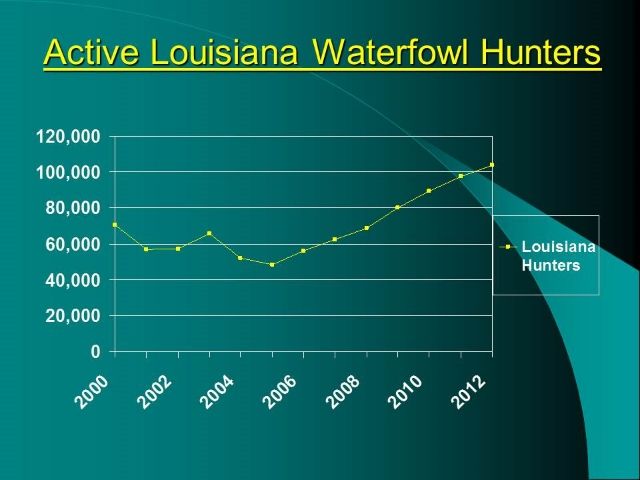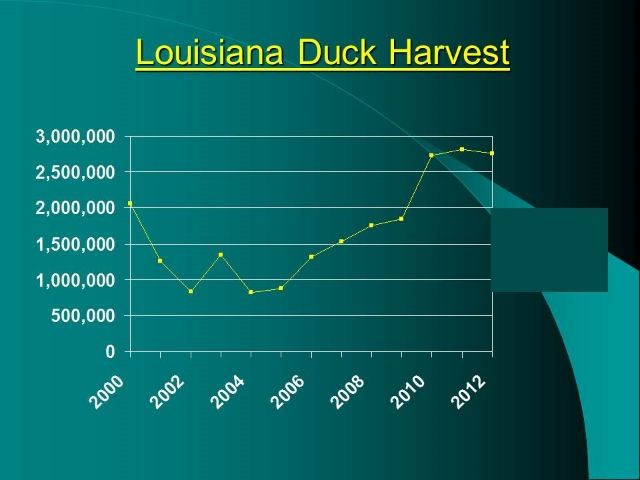Harvest Data:
Harvest data are collected from a random sample of hunters each year.
They are NOT from the questions you are supposed to be asked when you purchase your license. Those questions are used to divide hunters into 3 categories:
1) Low Kill - did not hunt or reports killing 0 to 10 ducks
2) Medium Kill - reported killing 11-30 ducks
3) High Kill - reported killing >30 ducks
Every 2 weeks, LDWF sends a list of names, addresses, and Kill category for every duck hunter that buys a license during that 2 week period to the USFWS. Then they select a sample: 2% of Low, 3% of Medium, and 5% of High kill hunters, and ask them to participate in the harvest survey by sending them this form and asking them to fill it out and return it at the end of the season:

From those "diaries" submitted by selected hunters, they estimate the number of active duck hunters, days hunted and ducks killed. That is called the "Questionnaire Survey" and is the first part of the federal harvest survey.
From the hunters that participated in the Questionnaire Survey last year and reported killing at least 1 duck, the USFWS selects a sample and asks them to participate in the "Parts Survey" the following year. This is the survey where selected hunters send in a wing from every duck they kill and the tail from every goose they kill using pre-paid/pre-printed envelopes provided by the USFWS throughout the season. Biologists get together in late February at each Flyway's "Wing Bee" and determine the species, age, and sex of every wing/tail sent in. The Parts Survey is particularly important because not only does it allow us to estimate species-specific harvest, but it provides the Age-Ratio of the harvest, which after correcting for differential vulnerability of juveniles and adults (which is done using band/recovery data), is the best estimate we have for large-scale reproductive success. Those data are used in every population model used in our harvest management strategies, which are the basis for our hunting regulations.
Taken together, the Questionnaire Survey and the Parts Survey provides the species-specific harvest estimates provided in the reports found at:
http://www.fws.gov/birds/surveys-and...nd-harvest.php
Here are the recent hunter number and duck harvest estimates for Louisiana, at least through 2012-13 seasons:

